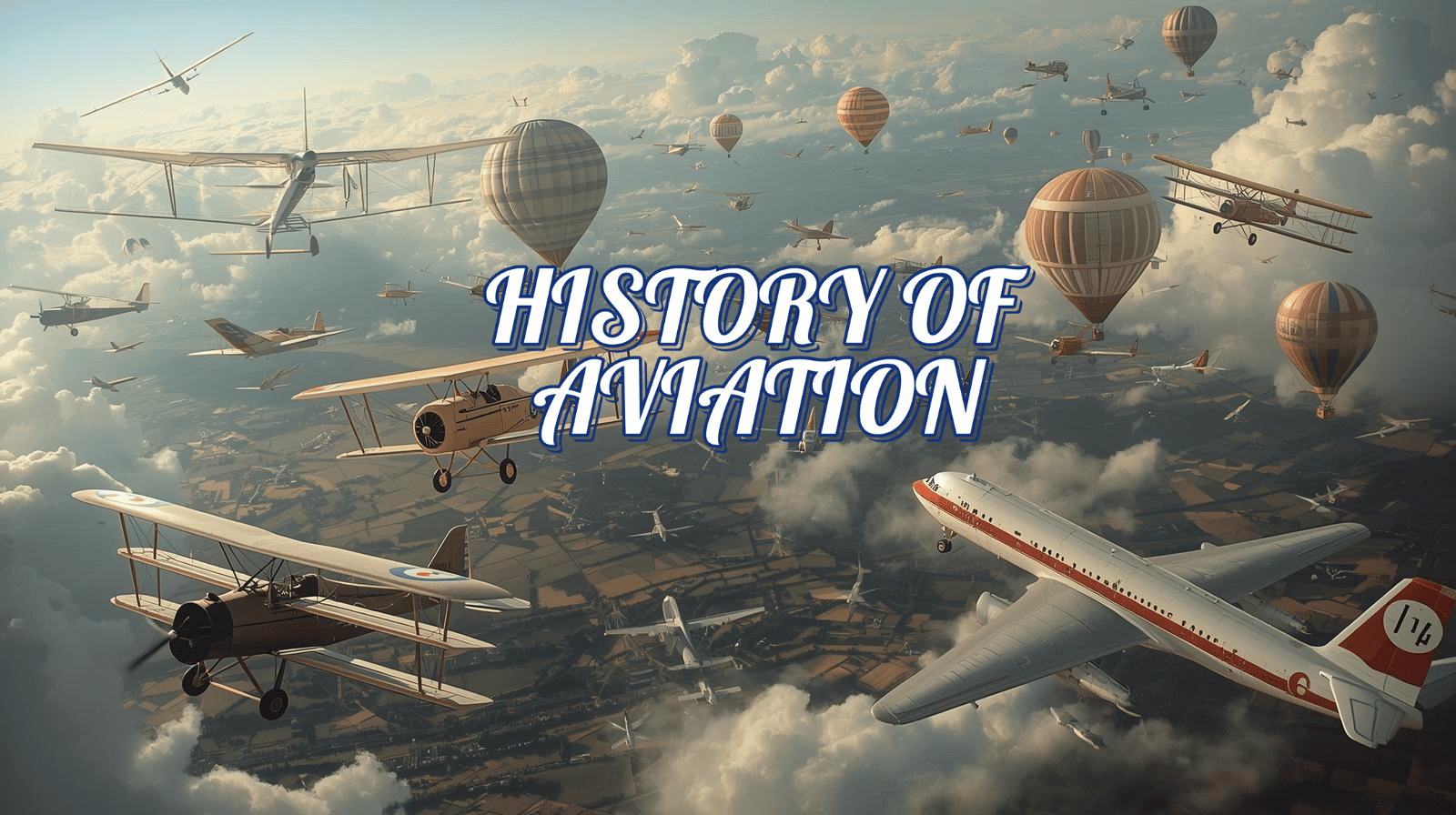
Since ancient times, humans have been fascinated with the idea of flying. The Greek myth of Daedalus and Icarus represents one of the earliest expressions of this desire, with their wings made of feathers and wax.
Throughout history, inventors and pioneers have attempted to turn this dream into reality, leading to some of the most important technological advancements of human civilization.
History of Aviation
Explore the key milestones in the development of human flight, from ancient myths to the Wright brothers and beyond.
Daedalus and Icarus
An early mythological story reflecting humanity's enduring desire to fly, though ending in tragedy.
Leonardo da Vinci's Ornithopters
Designed intricate human-powered flapping wing machines. While visionary, they were not practical and contributed little to technical advancement.
Montgolfier Brothers' Hot-Air Balloon
First sustained manned flight in history. Their balloon carried Pilatre de Rozier and Marquis d'Arlandes on a 5-mile flight over Paris.
Sir George Cayley's Design
Engraved the core concept of the modern airplane (fixed wing, separate tail, distinct systems for lift and thrust) on a silver disk. He is considered the "true inventor of the airplane" concept.
Otto Lilienthal's Gliders
Made the first successful, controlled flights in a fixed-wing glider. His over 2,000 flights provided crucial data and inspiration, proving wings could work.
The Wright Brothers' First Flight
The landmark achievement. At Kitty Hawk, NC, Orville and Wilbur Wright achieved the first controlled, sustained, powered, heavier-than-air, manned flight in history.
